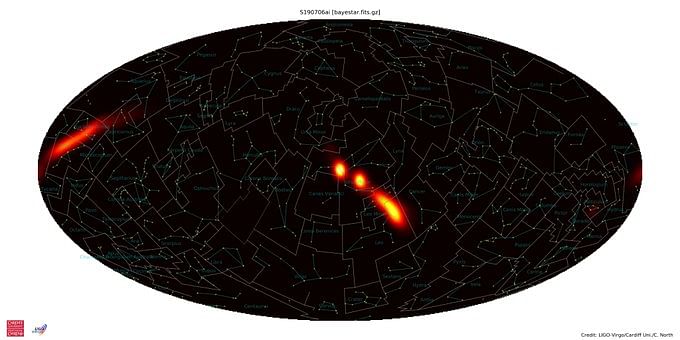New Delhi: It has been a busy weekend for the LIGO scientific collaboration that has detected two new suspected gravitational waves, both of which were most likely caused by smash-ups between massive black holes.
In a series of tweets, the Laser Interferometer Gravitational-Wave Observatory (LIGO) collaboration announced the detection of the two events, the origins of which are believed to be located 18.6 billion light years and 2.6 billion light years away, respectively.
Gravitational waves are ripples in the fabric of space and time that are caused by cosmic events such as the collision of massive black holes or neutron stars. These waves were first predicted by Albert Einstein through his general theory of relativity in 1916.
A hundred years later, in February 2016, scientists published a paper about the first detection of gravitational waves. The observation, made on 14 September 2015, came from the merger of two black holes 1.3 billion light years away.
At present, there are three active observatories capable of detecting these signals. The first two, Livingston Observatory and Hanford Observatory in the US, are part of the LIGO collaboration, while the third, which is part of the Virgo collaboration, is located in Santo Stefano a Macerata, near the city of Pisa, Italy.
A joint effort
The new observations were the result of joint efforts by LIGO and Virgo, which started working together on 1 April this year.
Each detector now surveys larger volumes of the universe than before, searching for extreme events such as smash-ups between black holes and neutron stars.
Of the two events observed this weekend, the first, named S190706ai, was recorded on 6 July simultaneously at all three detectors. If confirmed, the event could be the most distant gravitational waves detected yet.
Here'a a constellation map for #S190706ai centered on the most likely direction "blobs" that lie in Leo, Leo Minor and Ursa Major. But if this source is confirmed, it's probably a few hundred million times further away than the Big Dipper stars! https://t.co/UEYuShDW2Q pic.twitter.com/ftpcg8y9k3
— LIGO (@LIGO) July 7, 2019
The second event, S190707q, was detected on 7 July. If confirmed, this event will be one of the closest black hole mergers observed so far. This event, however, was only picked by the two detectors located in the US.
Both the events will be further analysed to confirm their nature and origin.
